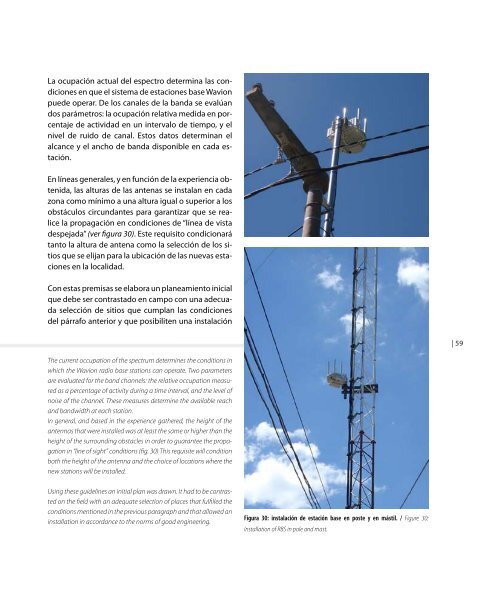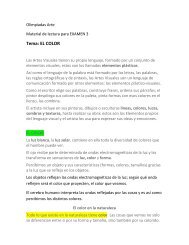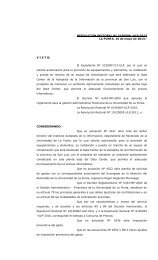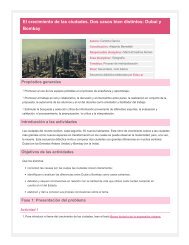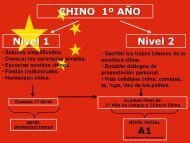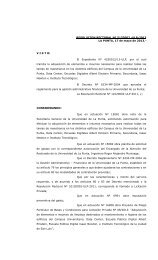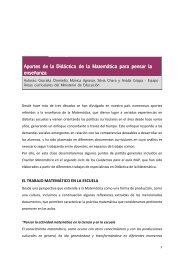e-Book PDF - Universidad de La Punta (ULP)
e-Book PDF - Universidad de La Punta (ULP)
e-Book PDF - Universidad de La Punta (ULP)
Create successful ePaper yourself
Turn your PDF publications into a flip-book with our unique Google optimized e-Paper software.
<strong>La</strong> ocupación actual <strong>de</strong>l espectro <strong>de</strong>termina las condiciones<br />
en que el sistema <strong>de</strong> estaciones base Wavion<br />
pue<strong>de</strong> operar. De los canales <strong>de</strong> la banda se evalúan<br />
dos parámetros: la ocupación relativa medida en porcentaje<br />
<strong>de</strong> actividad en un intervalo <strong>de</strong> tiempo, y el<br />
nivel <strong>de</strong> ruido <strong>de</strong> canal. Estos datos <strong>de</strong>terminan el<br />
alcance y el ancho <strong>de</strong> banda disponible en cada estación.<br />
En líneas generales, y en función <strong>de</strong> la experiencia obtenida,<br />
las alturas <strong>de</strong> las antenas se instalan en cada<br />
zona como mínimo a una altura igual o superior a los<br />
obstáculos circundantes para garantizar que se realice<br />
la propagación en condiciones <strong>de</strong> “línea <strong>de</strong> vista<br />
<strong>de</strong>spejada” (ver figura 30). Este requisito condicionará<br />
tanto la altura <strong>de</strong> antena como la selección <strong>de</strong> los sitios<br />
que se elijan para la ubicación <strong>de</strong> las nuevas estaciones<br />
en la localidad.<br />
Con estas premisas se elabora un planeamiento inicial<br />
que <strong>de</strong>be ser contrastado en campo con una a<strong>de</strong>cuada<br />
selección <strong>de</strong> sitios que cumplan las condiciones<br />
<strong>de</strong>l párrafo anterior y que posibiliten una instalación<br />
| 59<br />
The current occupation of the spectrum <strong>de</strong>termines the conditions in<br />
which the Wavion radio base stations can operate. Two parameters<br />
are evaluated for the band channels: the relative occupation measured<br />
as a percentage of activity during a time interval, and the level of<br />
noise of the channel. These measures <strong>de</strong>termine the available reach<br />
and bandwidth at each station.<br />
In general, and based in the experience gathered, the height of the<br />
antennas that were installed was at least the same or higher than the<br />
height of the surrounding obstacles in or<strong>de</strong>r to guarantee the propagation<br />
in “line of sight” conditions (fig. 30) This requisite will condition<br />
both the height of the antenna and the choice of locations where the<br />
new stations will be installed.<br />
Using these gui<strong>de</strong>lines an initial plan was drawn. It had to be contrasted<br />
on the field with an a<strong>de</strong>quate selection of places that fulfilled the<br />
conditions mentioned in the previous paragraph and that allowed an<br />
installation in accordance to the norms of good engineering.<br />
Figura 30: instalación <strong>de</strong> estación base en poste y en mástil. / Figure 30:<br />
Installation of RBS in pole and mast.


